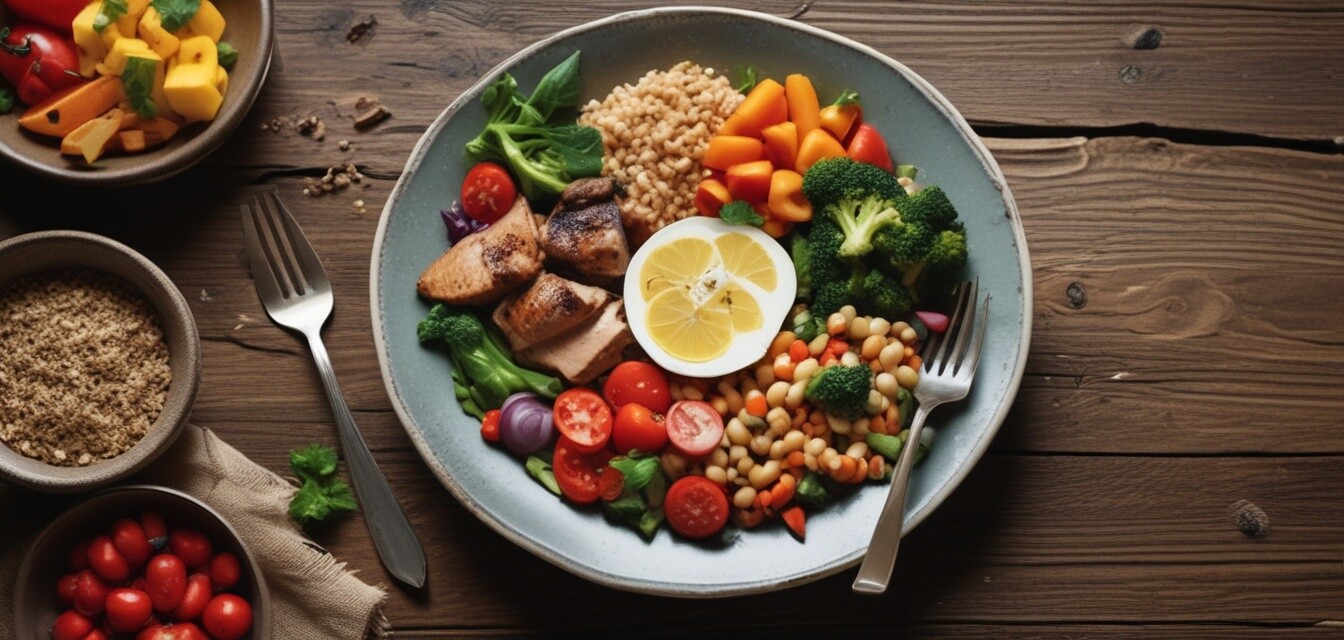
Cooking for Health: Tips for Nutrition-focused Meals
Key Takeaways
- Prioritize whole, unprocessed foods for maximum nutrition.
- Incorporate a variety of colors on your plate for a balance of nutrients.
- Experiment with herbs and spices to enhance flavor without added calories.
- Plan balanced meals that include proteins, carbohydrates, and healthy fats.
- Focus on portion control to maintain a healthy diet.
In today's fast-paced world, creating meals that are both nutritious and delicious can be a challenging task. However, cooking for health doesn't mean sacrificing flavor. With the right strategies, you can prepare meals that not only support your well-being but also tantalize your taste buds. Let's dive into some valuable tips that will help you achieve just that!
Understanding the foundation of nutrition-focused meals
Before we explore specific cooking tips, it's essential to understand the building blocks of nutritious meals. A balanced meal should include a mix of macronutrients: proteins, carbohydrates, and healthy fats.
| Macronutrient | Sources | Benefits |
|---|---|---|
| Proteins | Chicken, fish, lentils, beans, tofu | Essential for muscle repair and growth |
| Carbohydrates | Whole grains, fruits, vegetables | Provides energy and supports digestion |
| Healthy Fats | Avocados, nuts, olive oil | Supports heart health and satiety |
1. Embrace whole foods
Using whole, unprocessed foods is one of the easiest ways to enhance the nutritional quality of your meals. Whole foods like fresh fruits and vegetables, whole grains, and lean proteins are packed with vitamins and minerals. Here are some tips for incorporating more whole foods into your cooking:
- Choose fresh or frozen fruits and vegetables over canned options.
- Opt for whole grain versions of breads, pasta, and rice.
- Include legumes and nuts for protein and healthy fats.
2. Play with colors
A colorful plate is not only visually appealing but also signifies a diverse nutrient profile. Aim to include a variety of colors in your meals:
- Green: Spinach, kale, broccoli
- Red: Tomatoes, bell peppers, strawberries
- Orange: Carrots, sweet potatoes, oranges
- Black/Purple: Eggplant, black beans, blueberries
3. Use herbs and spices
Herbs and spices can elevate the flavors of your meals without the need for added sugar, salt, or unhealthy fats. Try incorporating the following:
- Basil and oregano for Italian dishes
- Cilantro and cumin for Mexican flavors
- Ginger and turmeric for Asian cuisines
4. Plan balanced meals
When preparing your meals, consider creating balanced plates that consist of proteins, healthy fats, and complex carbohydrates. A balanced meal could look like this:
| Meal Component | Example |
|---|---|
| Protein | Grilled chicken breast |
| Carbohydrate | Quinoa or brown rice |
| Vegetable | Steamed broccoli or mixed greens |
| Healthy Fat | Drizzle of olive oil or slices of avocado |
5. Portion control matters
Even the healthiest meals can lead to weight gain if portion sizes are not controlled. Use the following strategies to keep your portions in check:
- Use smaller plates and bowls to help control servings.
- Be mindful of serving sizes, especially with calorie-dense foods like nuts and oils.
- Listen to your body's hunger cues to avoid overeating.
Experimenting with meal prep
Meal prep not only saves time in the kitchen but also allows you to create healthier meal options throughout the week. Here are some tips to get started:
- Choose a day of the week to batch cook and prepare meals.
- Store meals in clear containers to make easy grab-and-go options.
- Try different recipes to keep your meals varied and exciting.
Tips for beginners
- Start with simple recipes that use minimal ingredients.
- Keep a well-stocked pantry with fundamental spices and staples.
- Don't be afraid to make mistakes; cooking is a learning experience!
- Explore various cuisines to inspire your meals.
Conclusion
Cooking for health doesn't have to be daunting. By incorporating whole foods, balancing your plates, and experimenting with flavors, you can create meals that nourish your body and satisfy your palate. Take the time to plan your meals and enjoy the process of preparing nutritious dishes that contribute to your well-being.
Pros
- Promotes overall health and well-being
- Improves culinary skills and knowledge
- Encourages mindfulness in eating habits
Cons
- Requires time for meal planning and preparation
- May involve a learning curve for beginners
For more tips and information on improving your cooking skills, check out our Cooking Tips & Techniques section. Happy cooking!